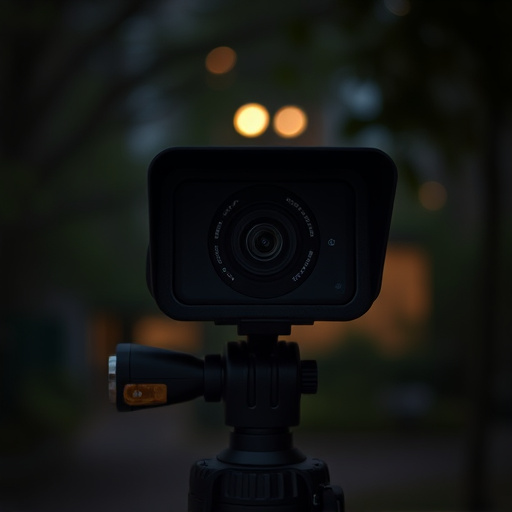Micro cameras are powerful tools for enhancing child safety, offering discreet and comprehensive surveillance with high-resolution imaging. Strategically placed in classrooms and play areas, they provide real-time monitoring, night vision, sensitive sensors, remote access, and peace of mind during emergencies. Locating these cameras requires technical skills and thorough inspection using tools like IR detectors and RF scanners. Today, parents increasingly adopt micro cameras for primary child protection, benefiting from advanced signal detection algorithms and real-time alerts. Implementing these technologies demands navigation of ethical boundaries, emphasizing transparency, informed consent, and balancing safety with privacy to foster open communication while safeguarding children.
Uncover the insidious world of hidden monitoring devices with our comprehensive guide. Learn how micro cameras, often used for child safety, operate and explore advanced techniques to detect their signals—a crucial skill in today’s digital era. We demystify location methods, provide tools for peace of mind, and delve into ethical considerations surrounding these powerful technologies. Discover the balance between privacy protection and parental surveillance with our expert insights on micro cameras for child protection.
- Understanding Micro Cameras: Unveiling Their Capabilities for Child Safety
- Locating Hidden Devices: Techniques to Spot Invisible Monitoring Signals
- Advanced Detection Methods: Tools and Technologies for Parenting Peace of Mind
- Ethical Considerations: Balancing Privacy and Child Protection Measures
Understanding Micro Cameras: Unveiling Their Capabilities for Child Safety
Micro cameras, often overlooked, are powerful tools in the quest for child safety and protection. These tiny yet advanced devices have revolutionized surveillance by offering discreet and comprehensive coverage. Capable of capturing high-resolution images and videos, they can be strategically placed to monitor various environments, from classrooms to play areas. Their compact size ensures they blend seamlessly into the background, allowing parents, caregivers, and authorities to observe without raising suspicion.
The benefits of micro cameras for child protection are multifaceted. They enable real-time monitoring, making it easier to detect potential hazards or suspicious activities. With their night vision capabilities and sensitive sensors, these cameras can capture crucial visuals even in low-light conditions. Moreover, the ability to remotely access footage offers convenience and peace of mind, ensuring quick response times in emergencies. By utilizing micro cameras for child protection, we take a significant step towards creating safer spaces where our young ones can learn, play, and grow without unseen dangers.
Locating Hidden Devices: Techniques to Spot Invisible Monitoring Signals
Locating hidden devices, such as micro cameras used for child protection, requires a combination of technical know-how and keen observation. One effective technique is to use specialized equipment like infared (IR) detectors or radio frequency (RF) scanners. These tools can pick up signals from tiny cameras that might be invisible to the naked eye. IR detectors are particularly useful as many micro cameras operate in the IR spectrum, making them detectable when regular light-based methods fail.
Additionally, examining potential hiding places is crucial. Check areas often overlooked or accessed by children, such as behind picture frames, inside clocks, or under furniture. Look for any unusual objects or modifications to everyday items that might hint at the presence of a hidden device. It’s also important to be aware of recent technological advancements; new micro cameras can blend seamlessly into common household objects, so staying informed about these trends is key to effective detection.
Advanced Detection Methods: Tools and Technologies for Parenting Peace of Mind
In today’s digital era, parents are embracing advanced detection methods and tools, such as micro cameras for child protection, to ensure their peace of mind. These innovative technologies offer subtle yet powerful solutions for monitoring children’s activities, providing a safety net within their daily environments. Micro cameras, designed with compactness and discreteness in mind, can be strategically placed in various locations like playrooms, dormitories, or even carried discreetly by caregivers.
The signal detection capabilities of these devices have evolved significantly, employing sophisticated algorithms and sensors to pick up on subtle changes in behavior or unusual patterns. Real-time alerts and remote monitoring features allow parents to stay informed and take prompt action if needed. This proactive approach to child protection leverages the power of technology, granting parents a sense of security while fostering an environment of trust and open communication.
Ethical Considerations: Balancing Privacy and Child Protection Measures
When employing micro cameras for child protection, it’s crucial to navigate the ethical landscape surrounding privacy rights and surveillance. The use of hidden monitoring devices, especially in a domestic setting, raises important questions about balancing safety measures with individual freedom. As technology advances, offering increasingly discreet solutions, it becomes imperative to establish clear boundaries and guidelines.
Parents or guardians who opt for such measures must ensure transparency and obtain informed consent from the individuals being monitored, particularly if they are minors. Ethical practices demand that the benefits of enhanced child protection be weighed against potential invasion of privacy. This delicate balance is essential in fostering an environment that encourages open communication while safeguarding vulnerable children.
In conclusion, micro cameras play a significant role in enhancing child safety while raising important ethical considerations. Understanding their capabilities and learning effective detection techniques, such as spotting hidden device signals, empower parents to take proactive measures. Utilizing advanced tools and staying informed about privacy rights ensures a balance between protecting children and preserving personal privacy. By staying vigilant and adopting modern technologies, parents can create a safer digital environment for their kids.
